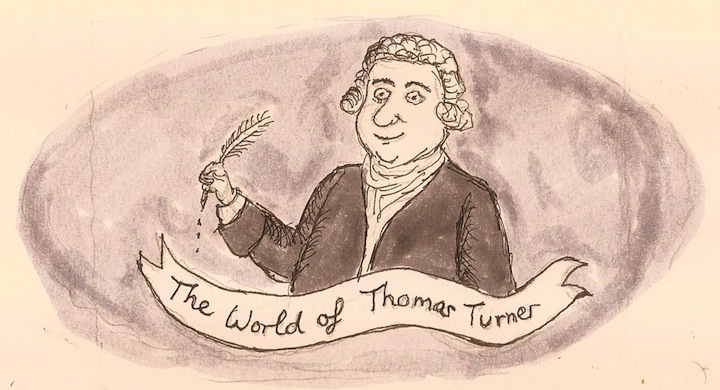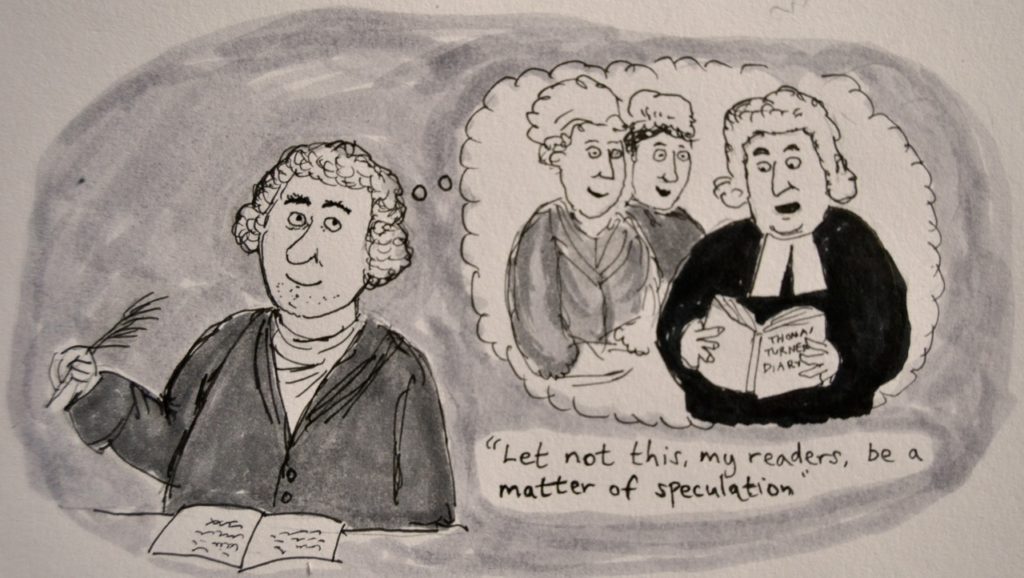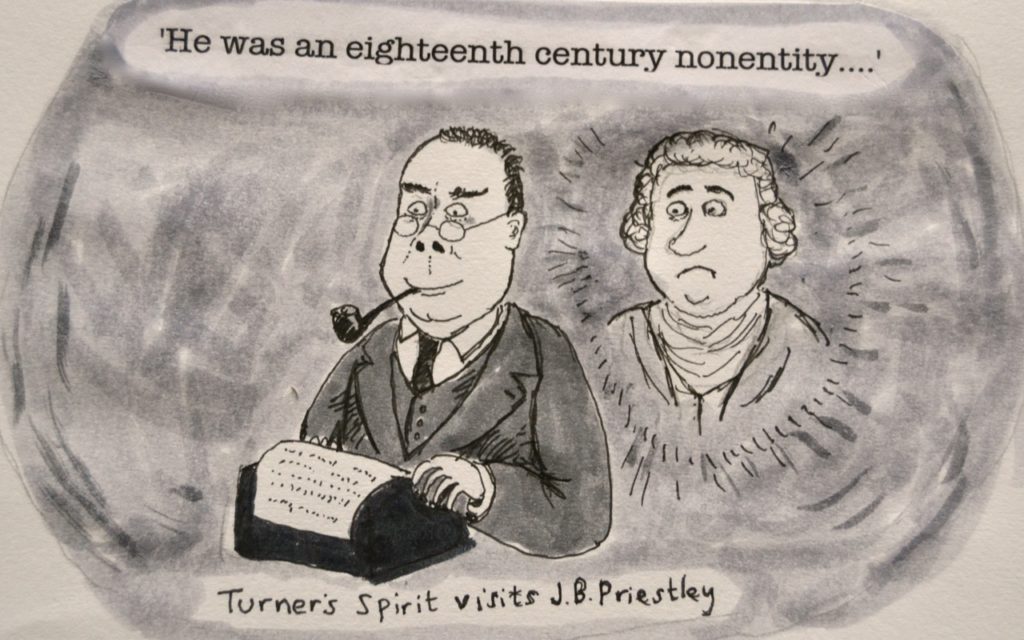A new instalment of Mathew Clayton’s monthly column exploring the daily life of a Sussex village in the middle of the 18th century, as recorded in the diary of Thomas Turner. With original illustrations by the author and artist Peter Chrisp.

On the 24 th August 1939, the British Library started its wartime evacuation plan. Great paper bundles were let out of the upper-storey windows into waiting lorries – all staff were called on to help. By the end of the first day 10 tonnes of material had been dispatched to the National Library of Wales in Aberystwyth. Sat in the reading room watching these events unfold was an American academic Mildred Campbell, who was putting the finishing touches to a book she had been working on for the previous seven years. The English Yeoman in the Tudor and Early Stuart Age, published by the Yale University Press in 1942, was a groundbreaking example of a new type of history book: one that examined the lives of ordinary people rather than royalty. It relied heavily on Mildred’s painstaking research in regional record offices and local history societies. In Worcester alone she analysed the status of 14,000 families. Yeoman were small landowners – a cut above labourers but well below the nobility. They were independent-minded, unostentatious, upright, neighbourly with a ‘love of freedom…and a sense of the dignity of the individual’. It was Mildred’s contention that it was these people and their values upon which America was built. During a day spent in Lewes, studying the archive of the Sussex Archaeological Society (formed in 1846 – it is the oldest archaeological society in the country) Mildred came across the original diary that Thomas Turner had written from 1754-1761.
Extracts from Turner’s diary have appeared at various points over the years, but Campbell was surprised how much more material existed in his notebooks that hadn’t been published. When she returned to America she alerted her colleague Professor Notestein of the discovery and he arranged to buy the notebooks via the rare book dealer William H Robinson Ltd, of Pall Mall, London. Why the Sussex Archaeological Society decided to sell something that was of such historical importance is still clouded in mystery. I have been through the society’s minute books and all I found was one small line in the accounts that mentions ‘the sale of volumes’ that I presume refers to Turner. Whatever way it was a portent of things to come. Over the next 50 years, American universities began swooping on British archives – specifically literary archives.
Local history is a weird thing. It has never been fashionable, it isn’t part of the mainstream literary culture and it doesn’t conform in all sorts of ways to the usual working of the publishing industry. There is a single book written about the village where I live and, it has to be said, it is remarkably boring. Yet hidden inside its pages is a detail about a field I cycle past every day. In the 16th century it was jointly owned by neighbouring farmers and the right to its usage passed from one to another each year. It was called the Drinkers Acre, as whoever had ownership that year had to spend 8 pence on everyone else, ‘to make them a drinking’. Local history is similar to crate digging – you wade through a lot of crap to find that one diamond.
Turner wrote his diary in small notebooks 4 inches wide by 6 1/4 inches. 111 have survived out of a total of (probably) 117. There are occasional glimpses that Turner hoped his diary might be read in years to come, but it doesn’t feel like this overly influenced what he wrote. He is not self-aggrandising; time and time again he berates himself for his own foolishness. Here he is in 1763 addressing us – his future readers…

Saturday 8 October
‘At home all day and very busy. A very windy and wet day. Mrs Carman, not Mr Carman, made me a present of a fine duck. Let not this, my readers, be a matter of speculation. There is no criminality in it. For I never kissed the women but once, and that was the day I stood sponsor or godfather for her daughter. So I presume her kindness (though I believe unknown to Mr. Carman) proceeds from a spirit of gratitude.’
The diary passed down through the family – and first appeared in print in an article written by two local antiquarians, R.W. Blencowe and M.A. Lower, in the Sussex Archaeological Society’s 1859 annual collection of writing. The purpose of the extracts chosen was to show what great progress had been in made over the last century. Charles Dickens read these extracts and wrote about them in the literary magazine he ran, All Year Round. In 1925 Bodley Head published a slightly extended version of Blencowe and Lower’s work with a very patronising introduction by J.B. Priestley and a foreword by Turner’s great-great-granddaughter Florence Maris Turner. Priestley said of Thomas…

‘He was an eighteenth-century nonentity, and his Diary, if there ever was one, the Diary of a Nobody…He steps out of his own self-confessions, half comic, half pathetic, sometimes absurdly pretentious and bombastic, sometimes startlingly sincere, a little figure from the past, from a social background that is very strange to us, who comes to life in our minds as a man and a brother.’
It wasn’t until 1984 that Turner’s diary got the treatment it deserved. The editor David Vaisey, assisted by Dr Henry Hardy at the Oxford University Press – and leaning heavily on the work done by a Yale undergraduate in the 1940s, Dean K Worcester – produced a faultless version of the diary. It is from this edition that I have been choosing my extracts. It does, however, only reprint about a third of Turner’s words. Just before Christmas, I emailed Yale University Library requesting a copy of a microfilm of the original, arranging for it to be delivered to my brother-in-law in Colorado as the library wanted to charge me £100 to post it. The day after I sent them my payment details I got an email back saying that they had just stopped copying microfilms. Shit. But then a few months later another email, saying they had found another company to provide this service, and seeing as I had waited so long they would provide it to me for free. And so last week, I sat in the University of Sussex’s library and started to go through for the first time, page after page of Thomas’s neat, copperplate-style handwriting.
I should add there have been a few honourable exceptions of writers that have left their archives to British libraries. Alan Bennett left his to the Bodleian in Oxford where a friend he had made as an undergraduate was now the head librarian. His friend’s name – David Vaisey.